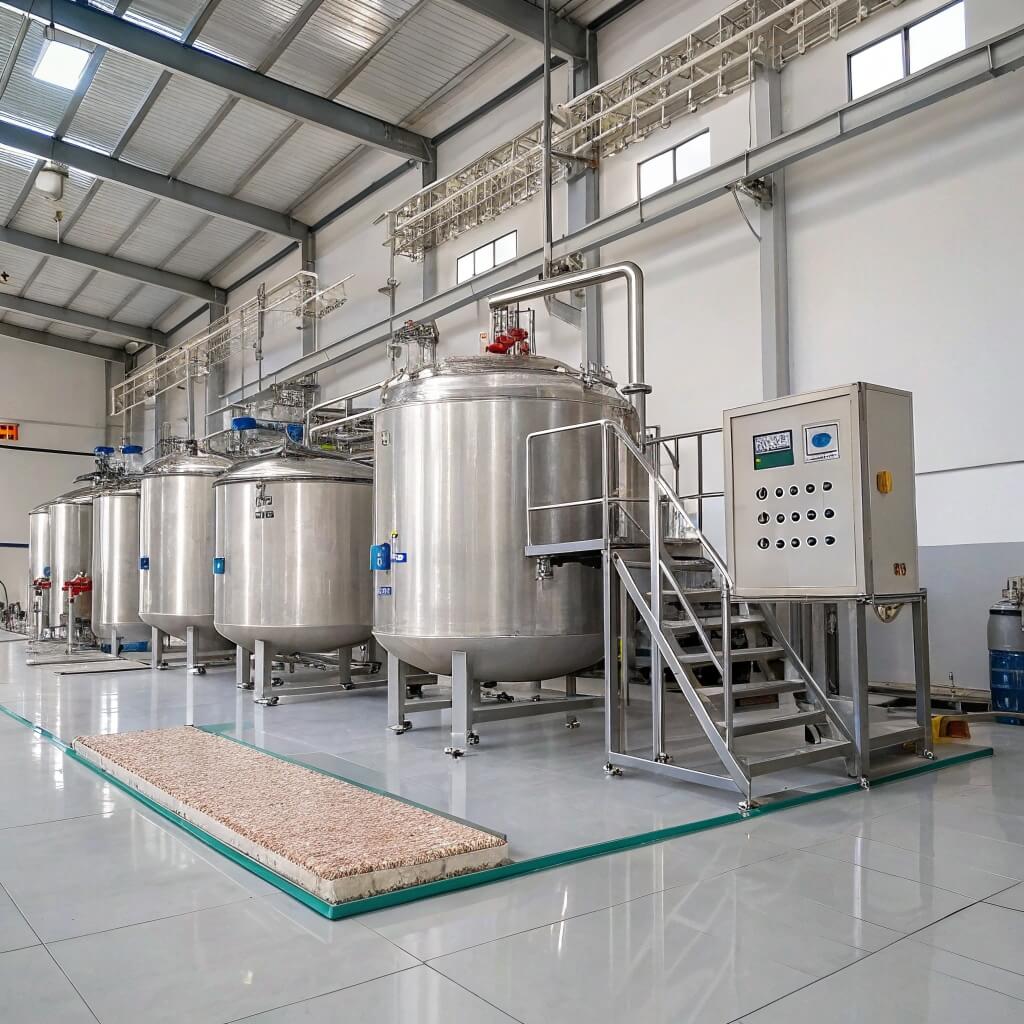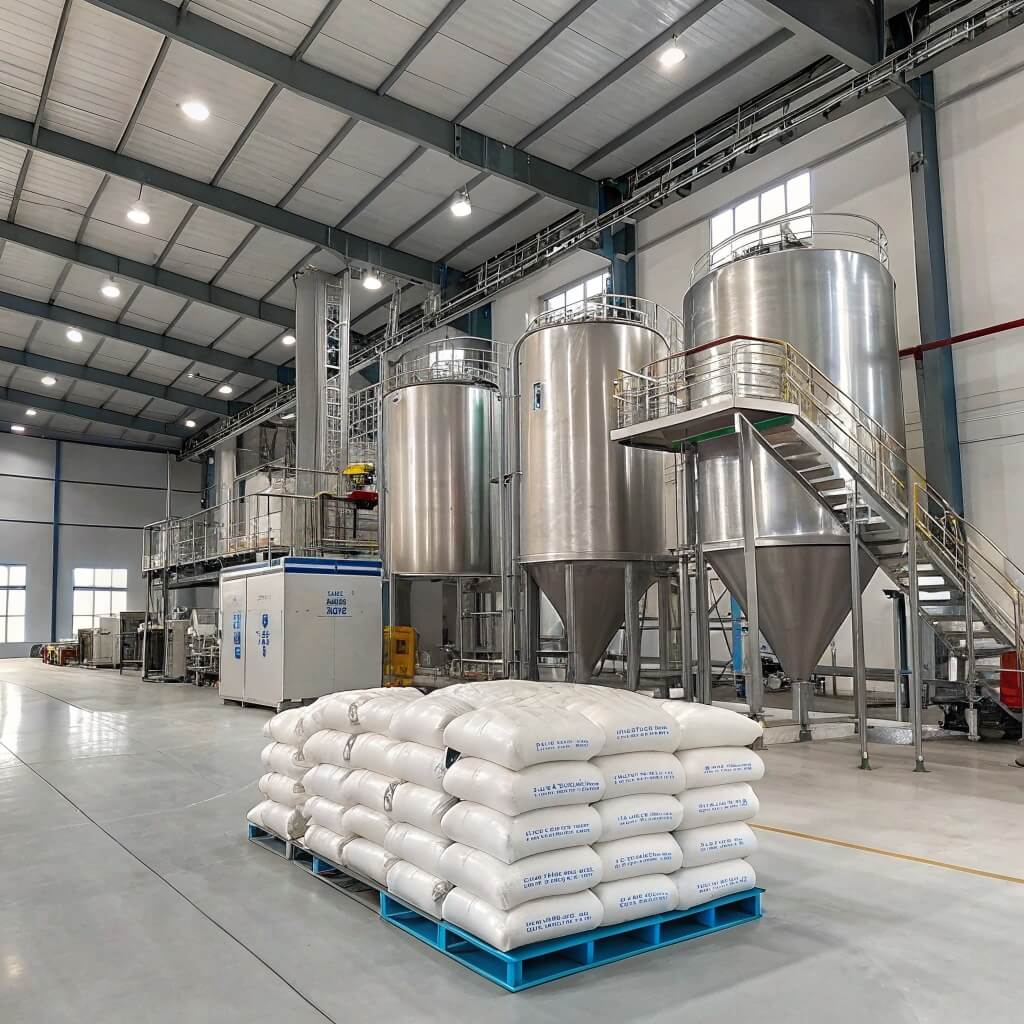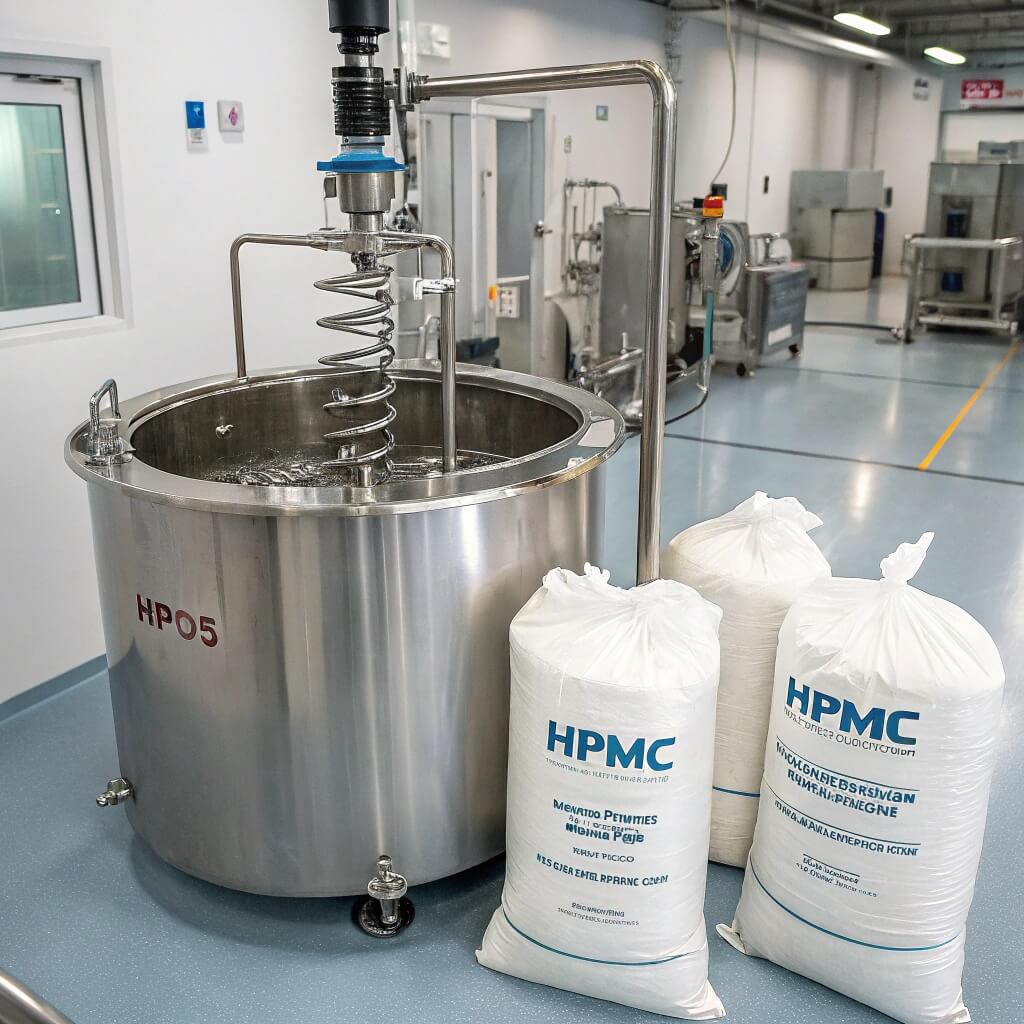Sourcing HPMC from China can be risky without proper quality verification. How many times have inconsistent batches disrupted your production schedule or led to customer complaints?
Verifying HPMC quality from Chinese suppliers requires a systematic approach combining laboratory testing, supplier qualification, documentation review, and sample evaluation. Effective verification processes focus on both technical specifications and batch-to-batch consistency.

A professional quality control laboratory analyzing HPMC samples with specialized equipment to verify viscosity, substitution degree, and purity.
Quality verification represents the critical difference between successful HPMC sourcing and costly manufacturing problems. Let's explore the verification strategies that ensure you receive consistent, application-appropriate HPMC from Chinese suppliers.
What are the main risks when sourcing HPMC from China?
Purchasing HPMC from China without understanding the potential pitfalls can lead to production disasters. What specific risks should buyers be prepared to mitigate?
HPMC sourcing from China presents several significant risks that can impact product performance, production efficiency, and regulatory compliance. Understanding these risks constitutes the first step toward implementing effective quality verification protocols.
Quality inconsistency between batches represents perhaps the most common challenge. Unlike commodity chemicals with simple specifications, HPMC performance depends on multiple interrelated parameters including viscosity profile, substitution pattern, particle size distribution, and dissolution characteristics. At Morton, our quality control team regularly encounters competitor samples with significant batch-to-batch variations despite identical specification sheets.
Specification misalignment occurs when suppliers provide products that technically meet stated specifications but fail to perform adequately in specific applications. This risk arises because standard HPMC specifications don't fully characterize application performance. The European Committee for Standardization provides application-specific testing methods that better predict real-world performance.
Contamination issues can arise from inadequate production hygiene, cross-contamination between product grades, or improper packaging. Common contaminants include metal particles from equipment wear, cross-grade contamination during production changeovers, and microbial contamination during packaging or storage.
Documentation discrepancies represent another significant risk area. Some suppliers provide certificates of analysis that don't accurately reflect actual product characteristics, either through deliberate misrepresentation or inadequate testing procedures.
Regulatory compliance gaps can create serious legal and business risks, especially for pharmaceutical and food applications. Some Chinese suppliers claim compliance with international standards without maintaining the necessary quality systems or documentation. The FDA's guidance on excipient GMP provides a framework for evaluating supplier compliance.
| Risk Category | Construction Applications | Pharmaceutical Applications | Food Applications |
|---|---|---|---|
| Batch Inconsistency | Medium-High | عالي | واسطة |
| Specification Misalignment | عالي | عالي | واسطة |
| Contamination | قليل | عالية جدًا | عالي |
| Documentation Discrepancies | قليل | عالية جدًا | عالي |
| الامتثال التنظيمي | قليل | عالية جدًا | عالي |
How do you evaluate the reliability of HPMC suppliers in China?
Finding trustworthy HPMC suppliers requires looking beyond marketing claims and basic certifications. What evaluation methods reveal a supplier's true reliability?
Evaluating supplier reliability requires a multi-faceted approach that examines both technical capabilities and business practices. This evaluation should precede specific product quality verification, as supplier reliability forms the foundation for consistent quality over time.
Supplier qualification audits provide the most comprehensive reliability assessment. These audits should examine production facilities, quality systems, personnel qualifications, and documentation practices. For pharmaceutical applications, audits should follow GMP principles. The International Pharmaceutical Excipients Council provides standardized audit protocols specifically designed for excipient manufacturers.
Production capacity verification helps assess whether suppliers can consistently meet volume requirements without compromising quality. Some suppliers claim large production capacities but actually operate at maximum capacity, leading to rushed production, inadequate quality testing, or extended lead times during peak demand periods.
Quality system assessment examines the formal processes that ensure consistent product quality. Beyond basic ISO 9001 certification, buyers should evaluate whether suppliers maintain application-specific quality systems appropriate for their industry. Pharmaceutical-grade suppliers should demonstrate compliance with IPEC-PQG GMP guidelines or equivalent standards.
Customer reference verification provides insights into actual supplier performance over time. Reputable suppliers should willingly provide references from existing customers in similar application areas. These references can share experiences regarding consistency, problem resolution, and long-term relationship quality.
| Reliability Indicator | ما الذي تبحث عنه | الأعلام الحمراء |
|---|---|---|
| Business Longevity | >5 years in HPMC production | Recently established or frequently changing business names |
| شهادات الجودة | Appropriate certifications for target applications | Basic certifications only or inability to provide documentation |
| Technical Staff | Qualified chemists and application specialists | Sales-only staff without technical backgrounds |
| Laboratory Capabilities | Modern analytical equipment with calibration records | Minimal testing equipment or outsourced testing only |
What are the key tests to verify HPMC quality?
Standard specification sheets often hide critical quality issues. Which specific laboratory tests reveal the true performance characteristics of HPMC?
Comprehensive HPMC quality verification requires both standard specification tests and application-specific performance evaluations. These tests should be conducted using validated methods with appropriate reference standards to ensure meaningful results.
Viscosity testing represents the most fundamental HPMC quality parameter, typically measured using rotational viscometers at defined concentrations and temperatures. However, single-point viscosity measurements provide limited information about actual application performance. The ASTM E1347 standard provides guidelines for viscosity measurement of cellulose derivatives.
Substitution degree analysis determines the methoxyl and hydroxypropyl content that fundamentally defines HPMC's chemical identity and functional properties. These parameters affect solubility, thermal gelation, and interaction with other ingredients. Standard methods include gas chromatography after hydriodic acid degradation, though some manufacturers use less accurate spectroscopic methods.
Particle size distribution significantly impacts dissolution rate and application behavior, particularly in dry-mix formulations. Laser diffraction provides the most comprehensive particle size characterization, though sieve analysis remains common in industry specifications.
Purity testing requirements vary by application, with pharmaceutical and food grades requiring the most stringent evaluation. Common purity parameters include loss on drying (moisture content), residue on ignition (inorganic impurities), heavy metals, and residual solvents.
Application-specific performance testing provides the most relevant quality information for actual use conditions. For construction applications, water retention, workability impact, and sag resistance tests predict field performance better than abstract specifications. For pharmaceutical applications, dissolution profile, film formation properties, and compatibility with active ingredients provide critical performance insights.
| طلب | Primary Quality Attributes | Recommended Test Methods |
|---|---|---|
| مواد لاصقة للبلاط | Water retention, open time extension | EN 12004, ANSI A118.4 |
| Pharmaceutical Tablets | Viscosity, substitution pattern, dissolution profile | USP <711>, USP <891> |
| المنتجات الغذائية | Gelling temperature, viscosity stability | JECFA methods, ISO 22000 |
| العناية الشخصية | Sensory properties, compatibility with surfactants | In-house formulation tests |
How can you verify batch-to-batch consistency of HPMC?
Even suppliers with occasional good batches may struggle with consistency. What methods detect and prevent the costly problem of batch variation?
Batch-to-batch consistency represents one of the most challenging aspects of HPMC quality verification, as it requires systematic evaluation across multiple production lots rather than single-batch testing. Effective consistency verification combines statistical approaches with practical application testing.
Statistical process control (SPC) analysis provides the most rigorous approach to consistency evaluation. By tracking critical parameters across multiple batches, SPC identifies both point deviations and concerning trends before they become specification failures. Reliable suppliers maintain SPC charts for key parameters and can demonstrate statistical control of their processes. The American Society for Quality provides guidelines for implementing effective SPC systems.
Multi-batch sampling provides a practical approach to consistency verification for new supplier qualification. Rather than testing a single sample (which may represent the supplier's best production), buyers should request samples from at least three different production batches, preferably manufactured months apart.
Trend analysis of certificate of analysis (CoA) data can reveal consistency patterns without extensive laboratory testing. By comparing CoA values across multiple batches, buyers can identify parameter drift, testing variability, or specification adjustment patterns that might indicate process control issues.
Application performance testing across batches often reveals consistency issues that specification testing might miss. For construction applications, preparing identical formulations with different HPMC batches and evaluating workability, water retention, or adhesion properties can identify performance variations despite specification compliance.
| Verification Stage | Activities | Acceptance Criteria |
|---|---|---|
| Initial Qualification | Test 3+ batches for all critical parameters | All batches within specifications, RSD <10% for critical parameters |
| Ongoing Monitoring | Test each incoming batch for critical parameters | Results consistent with qualification batches, no significant trends |
| Periodic Re-verification | Complete testing of random batches quarterly | Results consistent with initial qualification data |
| Application Testing | Prepare application formulations with different batches | Performance differences within application tolerance limits |
What sample testing procedures should buyers follow?
Effective sample testing can prevent costly production problems. What testing protocols provide the most reliable quality insights before placing orders?
Sample testing represents a critical step in HPMC supplier qualification and ongoing quality verification. Effective testing procedures balance comprehensive evaluation against practical resource constraints while focusing on application-relevant parameters.
Sample request protocols should specify exactly what samples are needed for meaningful evaluation. Rather than requesting generic "HPMC samples," buyers should specify viscosity grade, substitution type, particle size requirements, and intended application. For meaningful consistency evaluation, requests should explicitly ask for samples from multiple production batches with corresponding certificates of analysis.
Sample handling procedures significantly impact testing reliability. HPMC samples should be stored in sealed containers away from moisture, heat, and direct sunlight to prevent property changes before testing. Before evaluation, samples should equilibrate to testing environment conditions for at least 24 hours, as temperature and humidity affect HPMC properties.
Laboratory testing sequence should follow a logical progression from basic identification to detailed performance evaluation. Initial testing should confirm basic identity and grade (viscosity, substitution type) before proceeding to more resource-intensive application testing.
Application simulation testing provides the most relevant quality information for actual use conditions. For construction applications, this might include preparing mortar formulations and evaluating open time, sag resistance, or adhesion strength. For pharmaceutical applications, tablet compression and dissolution testing provide critical performance insights.
| Testing Stage | Go Criteria | No-Go Criteria | Next Steps if "Go" |
|---|---|---|---|
| Identity Verification | Matches specified grade | Wrong viscosity or substitution type | Proceed to specification testing |
| Specification Compliance | Meets all critical specifications | Fails any critical specification | Proceed to application testing |
| Application Screening | Acceptable performance in simplified tests | Poor performance in screening tests | Proceed to detailed application testing |
| Detailed Application Testing | Meets all application requirements | Fails critical application requirements | Proceed to multi-batch consistency testing |
What documentation is essential for quality assurance?
Proper documentation provides both technical assurance and legal protection. Which specific documents should buyers require from Chinese HPMC suppliers?
Comprehensive documentation forms an essential component of HPMC quality assurance, providing verification of product characteristics, manufacturing controls, and regulatory compliance. Required documentation varies by application, with pharmaceutical and food applications having the most stringent requirements.
Certificates of Analysis (CoAs) provide batch-specific quality information and should accompany every HPMC shipment. Comprehensive CoAs should include manufacturer identification, production date, batch number, expiration date, and test results for all specification parameters with corresponding acceptance criteria. The IPEC-Americas Certificate of Analysis Guide provides a standardized format that ensures complete information.
Technical Data Sheets (TDS) provide general product information including typical properties, recommended applications, handling guidelines, and storage requirements. While not batch-specific, TDS documents should be regularly updated to reflect current product characteristics and applications.
Safety Data Sheets (SDS) contain critical safety information including hazard identification, handling precautions, and emergency response procedures. Chinese suppliers should provide SDS documents compliant with both Chinese regulations and the destination country's requirements.
Regulatory compliance documentation varies by application and destination market. For pharmaceutical applications, this might include pharmacopeial compliance statements, residual solvent analysis, elemental impurity data, and GMP certificates. For food applications, food safety certifications, allergen statements, and GMO status declarations may be required.
| طلب | Essential Documentation | Regulatory Documentation |
|---|---|---|
| بناء | CoA, TDS, SDS | VOC compliance, environmental certifications |
| الصيدلة | CoA, GMP certificate, pharmacopeial compliance | Drug Master File, regulatory certificates |
| طعام | CoA, food safety certification, allergen statement | FDA compliance, Kosher/Halal certificates |
| العناية الشخصية | CoA, TDS, SDS | INCI listing, safety assessment summary |
FAQs
How to test HPMC?
Testing HPMC requires both standard specification verification and application-specific performance evaluation. Standard testing includes viscosity measurement (using rotational viscometers at defined concentrations and temperatures), substitution degree analysis (typically by gas chromatography), particle size distribution (by laser diffraction or sieve analysis), and purity testing (loss on drying, residue on ignition). Application testing varies by industry: construction applications focus on water retention and workability impact, pharmaceutical applications evaluate dissolution profiles and film formation, and food applications assess gelling characteristics and stability. For accurate results, sample preparation must follow standardized procedures, as factors like dissolution temperature significantly affect measured properties.
من هو مورد HPMC في الصين؟
China hosts numerous HPMC manufacturers with varying capabilities and quality levels. Leading suppliers include Shandong Head, Anhui Sunhere, Hopetop Pharmaceutical, Morton, and Celotech Chemical. These manufacturers maintain annual production capacities exceeding 20,000 tons and hold relevant international certifications. Quality levels vary significantly between suppliers, with top-tier manufacturers implementing comprehensive quality management systems and maintaining application-specific technical expertise. When selecting suppliers, buyers should evaluate not only basic manufacturing capability but also quality consistency, technical support resources, and application-specific experience.
ما هي الدرجات المختلفة من HPMC؟
HPMC grades vary primarily by viscosity, substitution pattern, and particle size distribution. Viscosity grades typically range from 5 mPa·s to 100,000 mPa·s (measured in 2% solution at 20°C), with construction applications generally using higher viscosity grades (15,000-100,000 mPa·s) and pharmaceutical applications using a broader range depending on specific functions. Substitution patterns vary in methoxyl content (typically 19-30%) and hydroxypropyl content (typically 4-12%), with different patterns optimized for specific application properties like thermal gelation or water retention. Particle size distributions include fine powder grades for rapid dissolution, granular grades for dust reduction, and surface-treated grades for delayed dissolution.
هل تمت الموافقة على HPMC من قبل إدارة الغذاء والدواء؟
HPMC is generally recognized as safe (GRAS) by the FDA for food applications and is listed in the FDA Inactive Ingredient Database for pharmaceutical applications. However, this general approval does not automatically extend to all HPMC products from all suppliers. For pharmaceutical applications, HPMC must comply with United States Pharmacopeia (USP) monograph specifications and be manufactured under appropriate Good Manufacturing Practice (GMP) conditions. For food applications, HPMC must meet Food Chemicals Codex (FCC) requirements and be produced under suitable food safety conditions. Suppliers should provide specific FDA compliance documentation for their products, including GMP certificates for pharmaceutical grades and food safety certifications for food grades.
خاتمة
Effective HPMC quality verification requires a systematic approach that combines technical evaluation, supplier qualification, and ongoing monitoring. By implementing comprehensive verification protocols, buyers can significantly reduce quality risks while establishing reliable supply relationships with Chinese manufacturers.
The verification process should begin with supplier qualification, focusing on production capabilities, quality systems, and consistency track records. Product evaluation should include both standard specification testing and application-specific performance assessment, with particular attention to batch-to-batch consistency. Comprehensive documentation provides the foundation for both initial qualification and ongoing quality assurance.
For critical applications, third-party testing and regular supplier audits provide additional verification layers that help prevent quality issues before they impact production. These investments in thorough verification ultimately deliver significant returns through improved product performance, reduced manufacturing disruptions, and enhanced customer satisfaction.
Contact Morton today to discuss your specific HPMC quality verification needs. Our technical team can provide application-matched samples, detailed documentation packages, and testing protocols tailored to your specific requirements.




